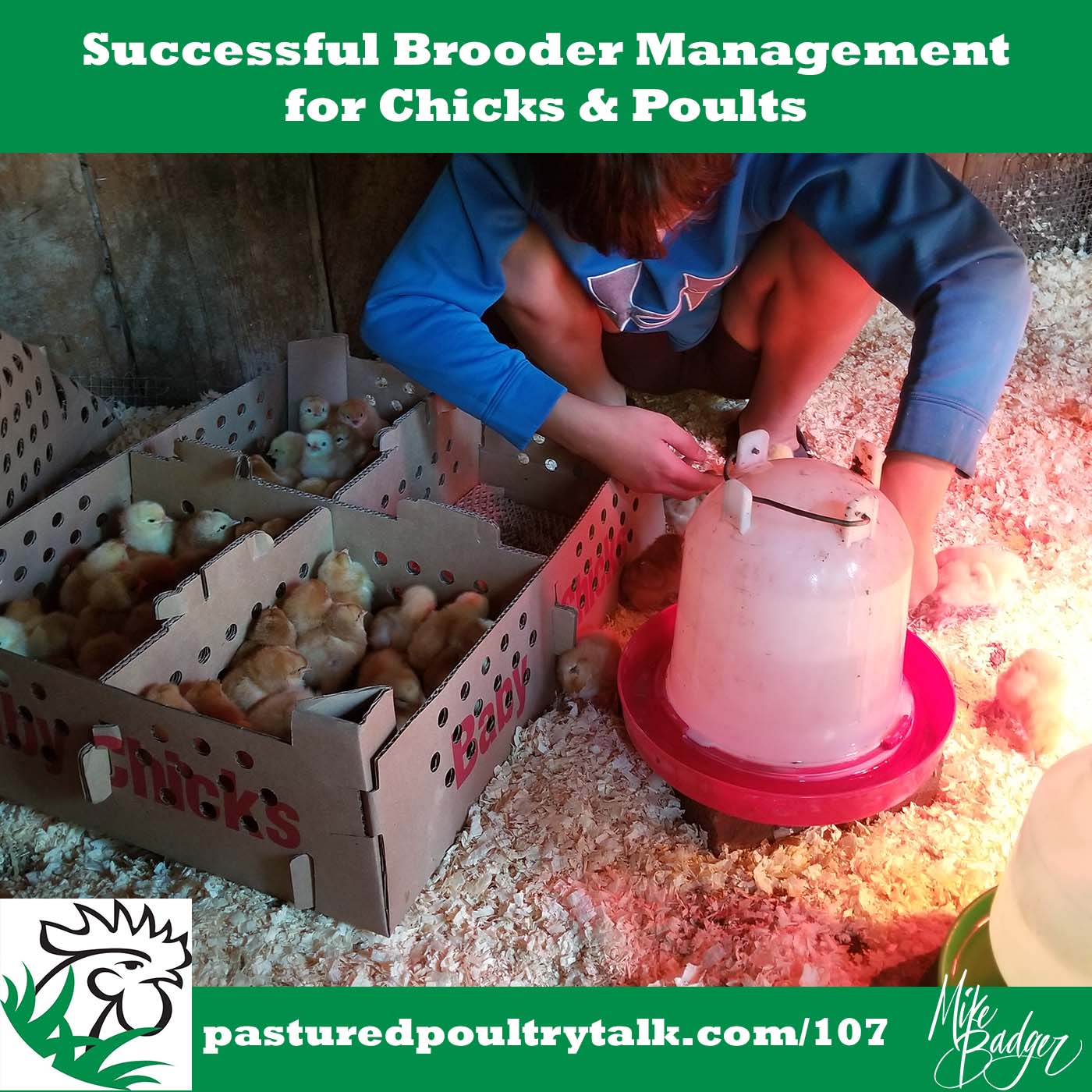
Did you know a commercial meat chicken or turkey may spend up to 40% of it’s life inside a brooder? Layers, by comparison, spend approximately 5% of their first lay-cycle in the brooder.
For all our poultry species, the time in the brooder is critical to the long term health and productivity of the flock with an emphasis placed on the first three days of life. These first few days, especially for meat birds, is an important time for the bird to establish healthy eating patterns and appetites.
Brooding, especially as you scale up, is typically the most obvious weak link in a pastured poultry production system, and that’s really counter-intuitive. You may think that taking care of a chicken inside a building is easy because you alleviate the most weather and predator risks of pasture. Inside the brooder, your job is to raise a young chick or poult with an immature immune system, get it the proper nutrition, keep it comfortably warm, and maintain the brooder environment amid constantly changing weather. And you do it without environment controls inside the brooder.
In this brooder environment, there’s a commingling of factors that makes the brooder time challenging. In the podcast episode, I discuss the relationship between heat, ventilation, stocking density, bedding, and more.
You mess up the time in the brooder at your own risk, which is to say, this is one of the most important phases of your production that you can master, and that’s why I recorded this podcast episode.
In this episode…
- Time in the brooder by species
- Brooder heat
- Have a backup heat
- Ohio Brooder
- Rules of thumb for adjusting heat
- Poorly feathered birds
- Harden off the chicks before going to pasture
- Brooder space for chicks and turkey poults
- 1/4 sq ft per chick per week
- Rounded corners
- Feed and water management in the brooder
- Bedding management and types
- Clean, dry, and warm is the key to brooder.
- Ventilation and drafts
- predators in the brooder
- A note about coccidiosis
Receiving Chicks into the Brooder
Our friends at Fertrell did a webinar training on Receiving Chicks that covers some of the same information as the podcast episode, but it also focuses heavily on those first three days of life in your care. You can’t learn too much about your brooder.
 This episode of Pastured Poultry Talk sponsored by Windy Meadows Hatchery. Windy Meadows Hatchery supplies day old broiler chicks from their family run hatchery.
This episode of Pastured Poultry Talk sponsored by Windy Meadows Hatchery. Windy Meadows Hatchery supplies day old broiler chicks from their family run hatchery.
If you’re looking for a supplier for your chicks, talk to the people who are directly responsible for hatching and shipping your birds. Tell them you heard about them from Pastured Poultry Talk. Contact Windy Meadows Hatchery.
 If you’re looking for fences that work from the people who use them everyday, contact Premier at 800-282-6631 or visit their website to request an informational catalog.
If you’re looking for fences that work from the people who use them everyday, contact Premier at 800-282-6631 or visit their website to request an informational catalog.
 Badger’s Millside Farm is a distributor of Ready-to-Lay Pullets. Ask about full beak, non-gmo, certified organic, soy free, and more. Learn more.
Badger’s Millside Farm is a distributor of Ready-to-Lay Pullets. Ask about full beak, non-gmo, certified organic, soy free, and more. Learn more.

1 comment on “Successful Brooder Management for Chicks & Poults (PPT107)”